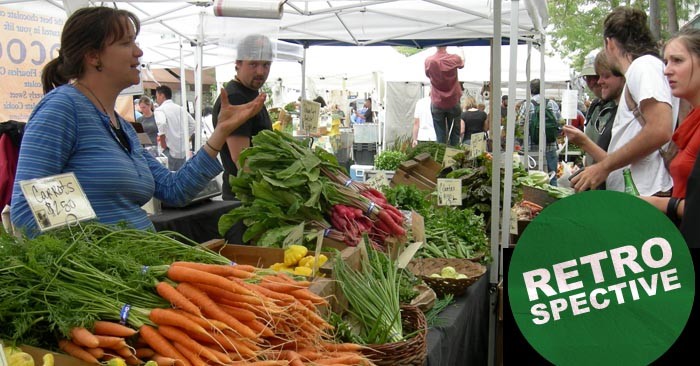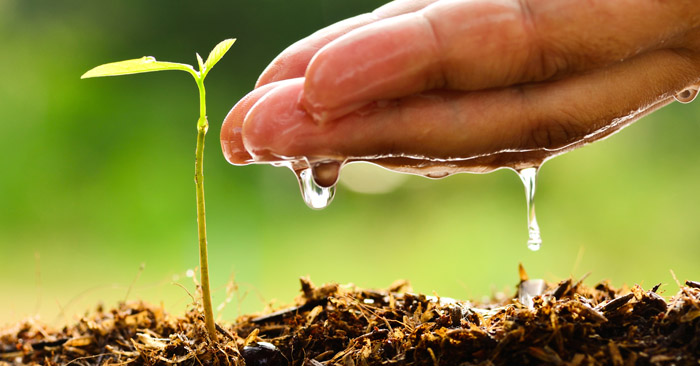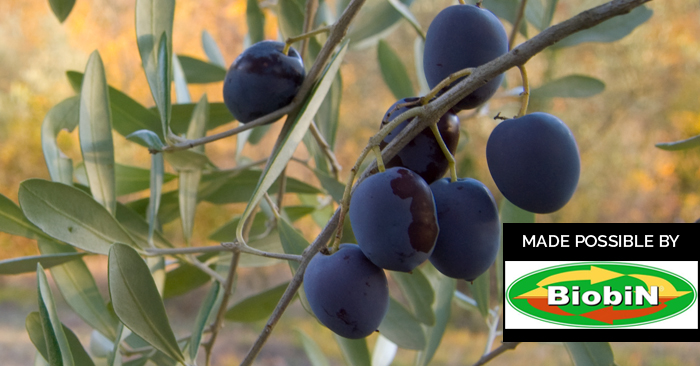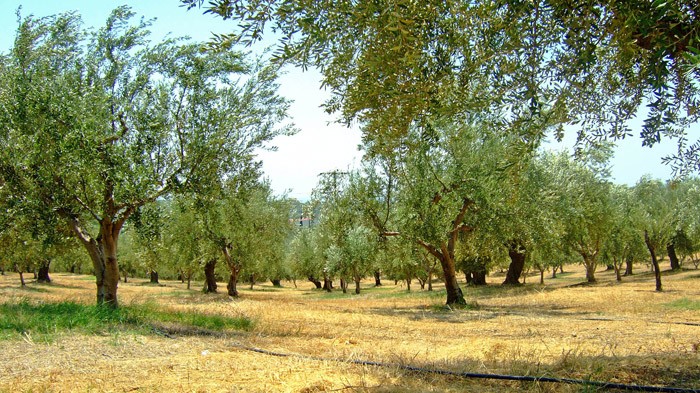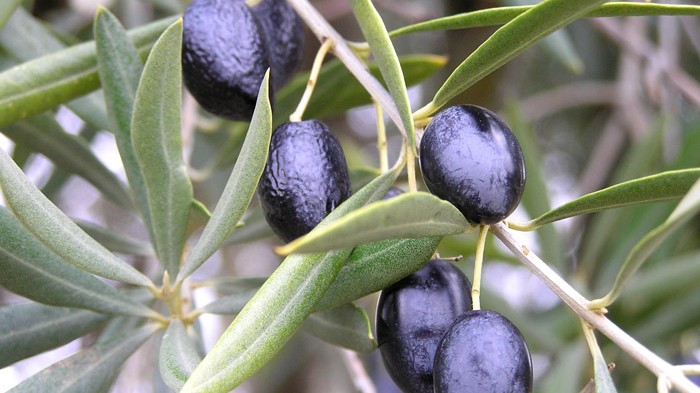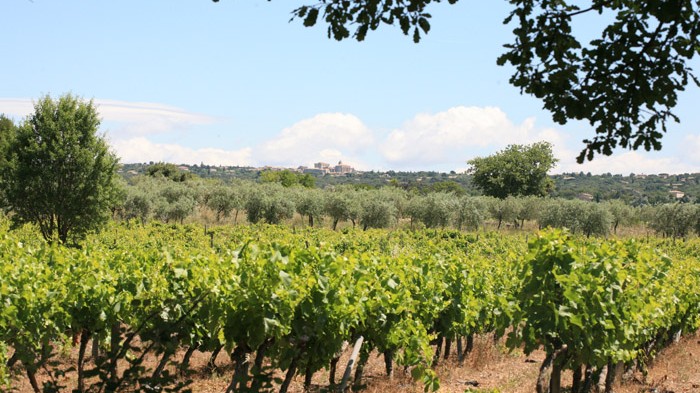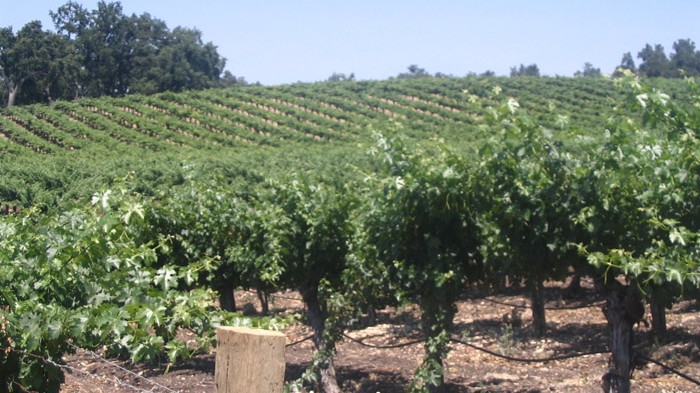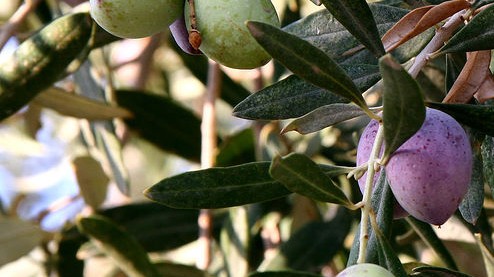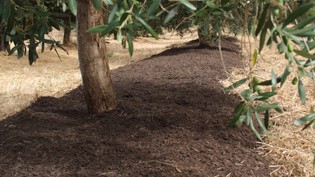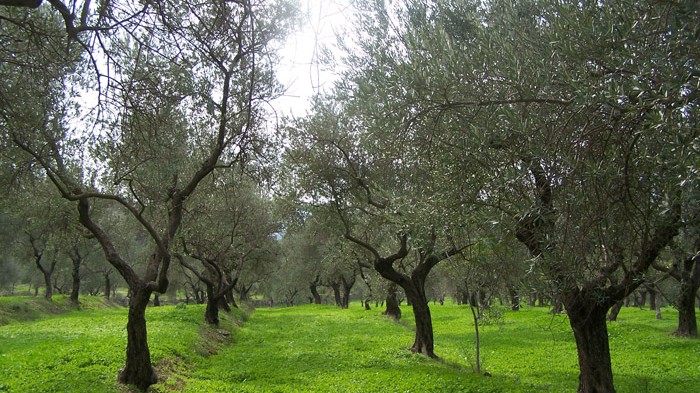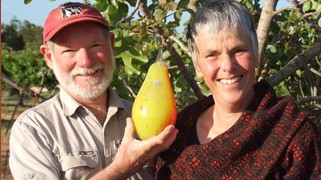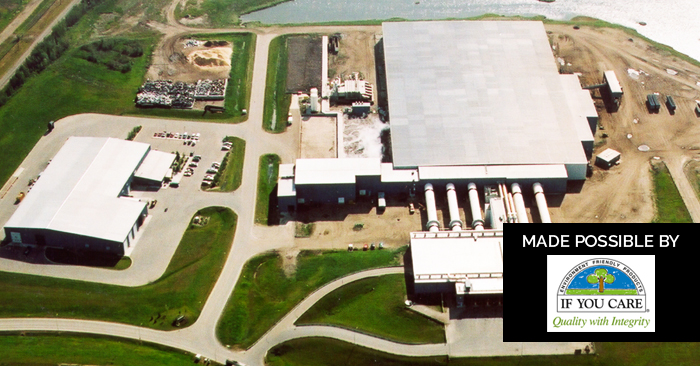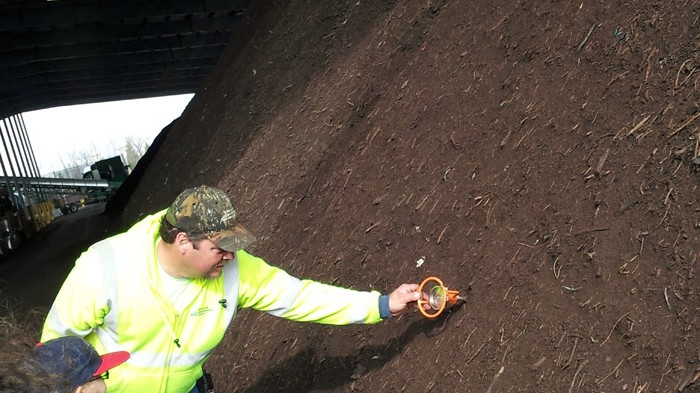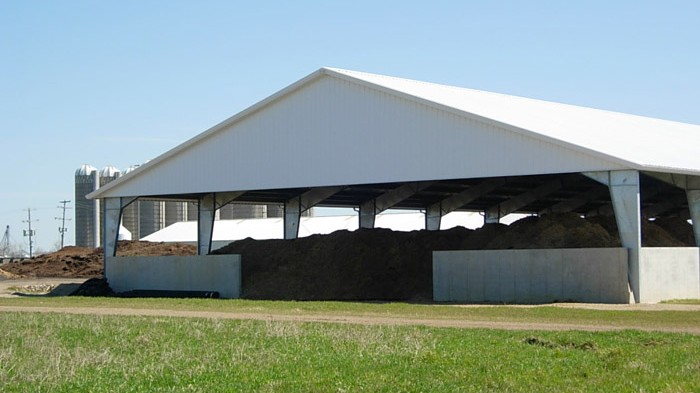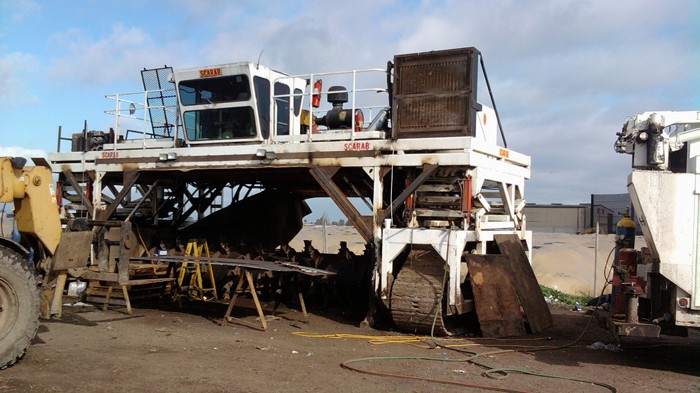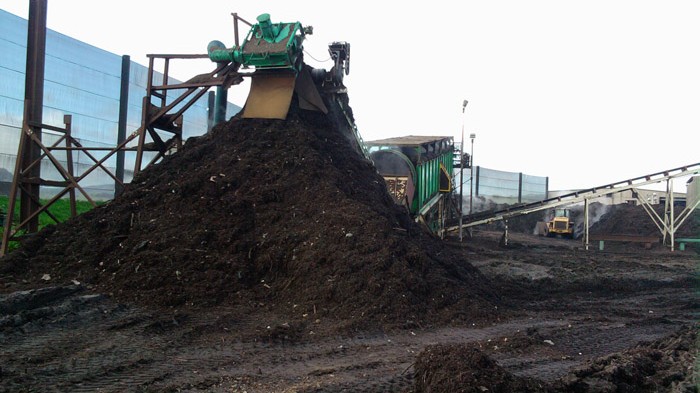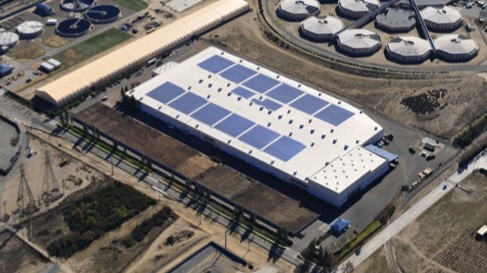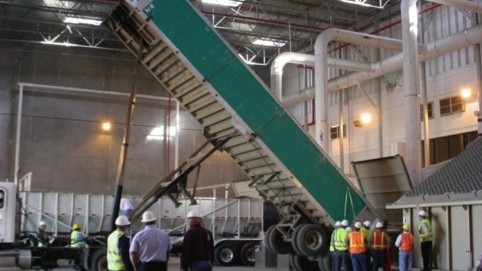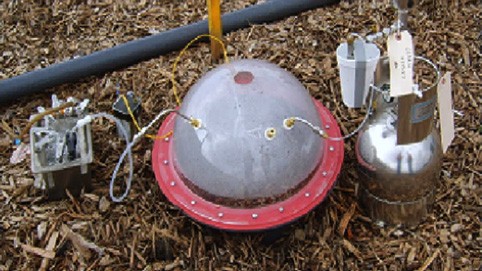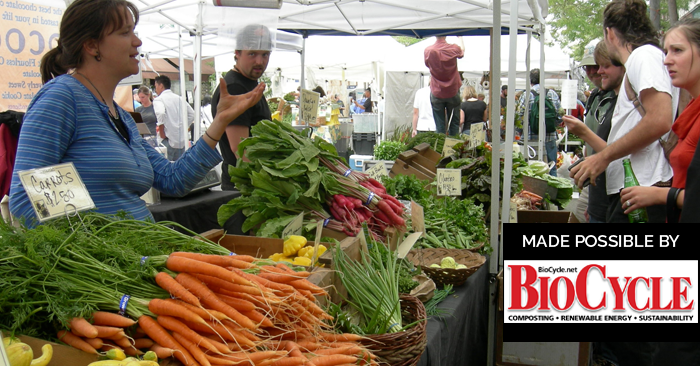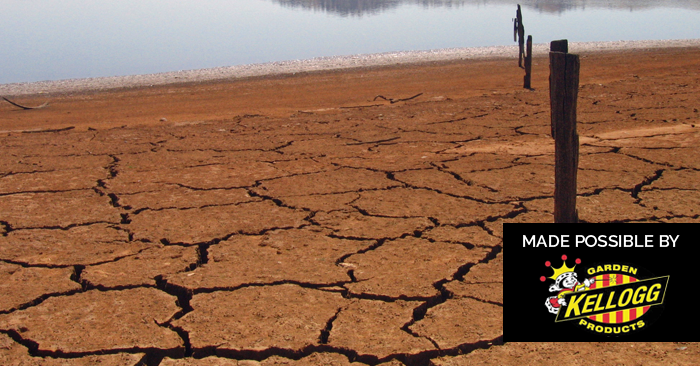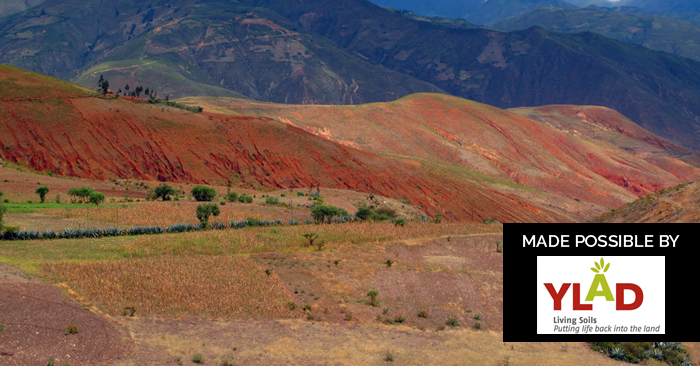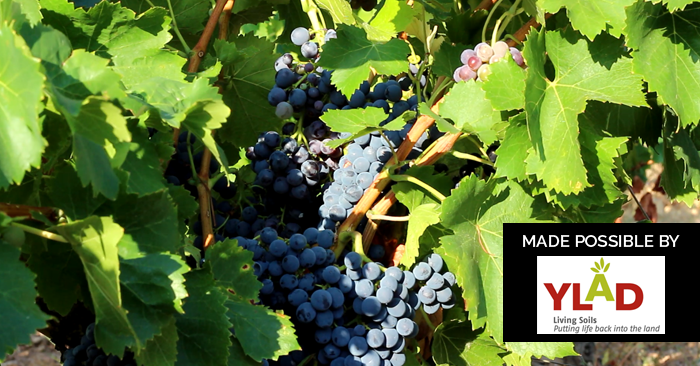[Retrospective] Vineyards Special #1: The Wonders of Cover Crops
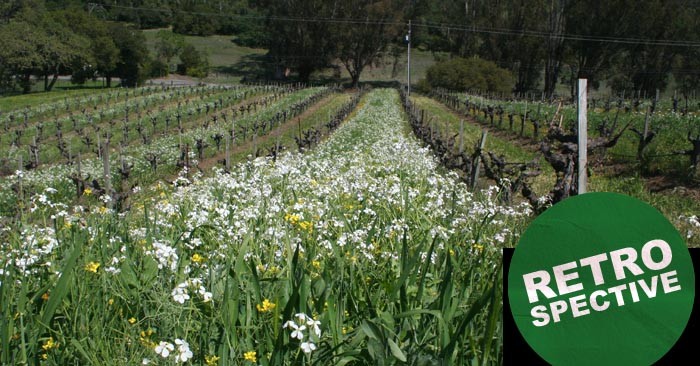
EPISODE SUMMARY
While we will continue to make new episodes, there are times when we feel the urge to highlight a past episode – because the topic it covers becomes news and the show shares some great insights, or because it is content that our newer listeners might have missed out on. Since last year was the International Year of Soils, we will be republishing a few of our best episodes about soil and soil health to get a fresh perspective in light of all the progress that has been made on the issue.
To round-off the series, we’re ending with a in-depth look at a popular and very effective sustainable agricultural technique: cover cropping. In episode 16 of our show, we had with us Bob Cannard and Bob Shaffer – both experienced sustainable farmers and horticulturalists. They shared their techniques with us, explained just how cover cropping works and how beneficial it can be, and gave us their expert advice. We learned a lot about cover crops in making this episode, and if you’re wondering after the last two episodes, just what exactly the sustainable agricultural techniques might look like that we need to start pushing for – this is the episode for you.
Links to other episodes in the Series:
Episode 3
–
–
Photo by Robert Reed, courtesy of Recology.
Cover crops are becoming more and more popular, but they still aren’t completely understood by everyone. Bob Canard, can you tell me what exactly cover crops are, and how do they work?
Bob Cannard: Cover crops are nature’s way of preserving, enhancing and balancing the soil. All they are, are crops that grow naturally, or are planted, that are allowed to grow and establish and protect the soil, cycle nutrients and actually build soil, absorb atmospheric carbon, deposit it in the soil as food for the soil biology, which is the important digestive force of all life.
Bob Shaffer: Yes, cover crops are simply plants. Now, we’re going to chose the genus and species of plant that we call a cover crop, or, as Bob said very brilliantly, we can also just accept the resident vegetation – that which is growing in a field or pasture. But let’s recall that plants are the organism on earth that harvest carbon out of the air and puts that carbon into a form that we call organic matter. So plants are literally producing organic matter on earth that we then can introduce into the soil as a carbon source, which is food for microorganisms and other animals, and then also the plant above ground is protecting the soil surface.
Where are cover crops most popular?
BS: Cover crops are being used every place around the world right now, more and more every time. I’ve watched Napa and Soma Valleys (California), as I’m sure Bob has also, become quite well cover cropped compared to ten or fifteen years ago; they’re more and more used all the time every place.
Bob Cannard, as a long-time cover crop user, can you tell us the key benefits of using cover crops, as opposed to mulches and other methods?
BC: They stimulate the soil biology: all plants produce lots of sugars and other complex organic molecules that they pump into the soil and establish a relationship with the soil, so they actually nurture the soil. At the same time, their root system breaks up (subsurface soil compaction), and cycles nutrients from deeper profiles to the surface, making the soil more aerobic and balanced towards aerobic life – which it’s all about.
By comparison to mulching, they grow many cubic yards (depending on the intensity and the size of the cropping system) of compost for the soil. And mulching – you’re getting that organic material from another piece of ground, and it sacrificed its organic material to turn it into mulch or compost, which is spread on the ground, and it takes a lot of BTUs of petroleum energy in order to do all of that and spread it. Whereas the cover crop is very low energy input: the seeds are planted and they grow, and they harvest that atmospheric carbon, and deposit directly into the soil without those heavy inputs.
That’s a very interesting benefit.
BS: It’s very expensive to grow mulch on one piece of land, take the carbon from that land and move it over to another. We’d like to grow and use the cover crop as our source of mulch.
Bob Cannard, you manage hundreds of acres of vineyards that use cover crops successfully. Can you tell me a little about your strategy and what cover crops you use?
BC: We have a thousand acres in cover crops. Every winter time is the rainy season, and we plant in the fall after harvest, or just before harvest. We used mixed seeds and I’m a great proponent of a mixture of cover crop plants.
First off you need very low energy, quick germinating nurse plants that hold and protect the soil for the higher-level life support plants that come along slower and later. The cover crop protects the soil from all kinds of erosion, and the little quick growers do that quickly. They don’t provide too much organic matter, but they really help the next stage, and the next stage is perhaps the low proteinaceous broad-leaves, and then you’ll phase in to the higher proteinaceous grasses – more and more biomass. And finally, the high level of life, long term blooming plants, like the clovers and the vetches and the peas and the beans – the leguminous plants that take much longer to mature. Each one helps the next one, and the diversity is a very important element.
We like to grow our cover crops and let them stand to as full maturity as possible. In the organic kingdom, there’s lots of conversation about green manure cover crops; well, they break down very quickly and release lots of nitrogen. What I’m looking for is lots of carbon, and stimulating the free-living nitrogen-fixing biology of the soil, and this vastly reduces the need for nitrogenous influences, applications, fertilisers on the vineyards – and in the vegetable gardens as well.
Can you get a little more detailed about the process and tell us when you plant the seeds, how you cultivate it – if you do at all – when you mow it, and how you manage it all?
BC: Well, it depends entirely on the site. Some sites, hillside sites, are never cultivated and the cover crop leans progressively more towards perennial plants. Other sites are cultivated, but we do our best to cultivate as late as possible, allowing the cover crop plant to come to its maturity. When you try to incorporate a green plant, like a green manure, it has only lived a portion of its life and it has a high nitrogenous body; whereas if you allow to as great a degree of maturity as possible, it dries out, it makes its own seeds (some varieties reseed themselves and don’t need to be included in successive plantings), and it’s straw is carbonaceous and has a longer than one year half-life in a temperate climate. So you actually build soil carbon, the foundation of the soil digestion, which is an absolutely critical motion. Everything has to have good digestion, and that digestive force solubilises the minerals. Additionally, on the soil surface, that straw spawns and sponsors the various yeasts, so we are less dependant upon yeasting the pressed grape juice to make wine, and we can use the indigenous yeast of the particular site in many cases which means we get the true terroir, or taste of that soil and that location.
To be clear about the general process of cover cropping: you plant the seeds, either in spring for summer cover crops, or in the autumn for winter cover crops. You can use it as a green manure by mowing it and incorporating it into the soil when usually when it’s flowering and still green, or you can wait until it’s a little woody and chop or mow it down to use as mulch. Is that correct?
BC: Yes, it’s mowed down or grazed down, and maybe cultivated, or maybe just mowed and grazed – it depends upon the plot and the variety, and air drainage, and many, many variables. We’re always trialling little plots of little pounds of sprinkling here and there, and it takes a while to grow the soil; if you have a herbicided, clean cultivated, long-standing degraded soil, high level of life plants like clovers may not take hold, because it doesn’t have properly developed soil biology yet. But through the use of incorporating the maturity of the cover crops over seasons, the soil population will change and you’ll get the nice, soft, beautiful, proteinaceous, easy to work with kinds of plants, and they will take over from the thistly, thorny, creepy-crawly, difficult types of plants to manage.
So viticulturalists should be prepared to invest a bit of time at the beginning if the soil isn’t healthy already. And is there anything specific to vineyards that viticulturalists need to understand about cover cropping – is it much different to cover cropping for farms?
BC: Not particularly, but the height of the type of plant and whether it’s an annual cropping cycle or a perennial, and its degree of maturity so that it can become reseeded, so you don’t have to reseed it annually – at least not with all of the species…
We use early season grazing of sheep and goats at high density, quick rotation so that they aren’t over-grazed but just appropriately grazed. The sheep actually stimulate the regrowth of the cropping system, so it responds as the season advances into the summer time with a good early maturity. Then, in many cases where it’s just mowed, what you end up with is all of this reflective strawy grass on the soil surface – not just grass but all the plants that turns golden as it dries out – and it reflects heat back up to the fruits underneath the canopy and actually increases the warmth and the dryness of the canopy. This reduces the incidents of mildew, and stimulating this broad array of canopy biology that additionally enhances the resistance of the plant through species competition of one dominant mildew type problem.
That’s a unique benefit of cover cropping, or mulching. And Bob Shaffer, do you want to add anything?
BS: We have to recall that viticulture is a monoculture, often times at least, and I see the cover crop as a way to bring diversity, and to break the problems that are associated with monocultures. Also, I can rotate the genus and species that I use; I can rotate them over space, I can rotate them over time, so it actually adds, not only diversity to the monoculture, but adds the component of rotation. For example, I can put perennials on one side of the vines or tractor rows; I can manage that as a perennial cover for a few years, and then I can have annuals on the other side. I can also use those annuals and/or the perennials – or specific strips planted through the vineyard – as a beneficial habitat and food sources for beneficial insects, beneficial life forms in the vineyard. So, in all ways, the cover crop – if selected and managed well – can be the source of diversity, can be the source of rotation, and the source of beneficial life forms brought to the vineyard.
There are many variables when it comes to cover cropping, and there is no “one-size-fits-all” approach, but is there something you would recommend to everyone starting off with cover cropping?
BS: It’s something that teaches you. I’d encourage people to immediately start cover cropping, and all farmers must always have trials going on. These do not have to be large, expensive, exhausting procedures, but having some type of trial always going on in the farm shows you where to head next. It also is your little classroom where you can go out and look and learn. So having at least some strips of cover crops – of different species always – to learn what to plant next is a good idea.
There are a lot of species to choose from as well. Bob Shaffer, what are your thoughts on choosing the best species for vineyards?
BS: On choosing species, one of the things you want to do, as Bob Cannard pointed out, you want to use a polyculture. I’m always going to use a mix of grasses, legumes and forbes when I’m planting. Also, as we broadcast it or drill this type of mix, the site itself will sort out which plants are most appropriate there.
In frost-prone vineyards, cover crops may the increase in risk of frost damage. What is your advice regarding this?
BS: Certainly if I’m going to put a cover crop into a frost prone vineyard, then I’m going to add the important component to the cover crop that we haven’t directly mentioned yet, which is as important as species selection, or any other feature of the cover crop: the management of the cover crop. So, if I have frost concerns, I’m going to select cover crops that are low growing, and then I can manage the cover crop in the frost season by further mowing it – at least on one side of the rows to allow some air drainage. Also, if you’re using broad-leafed species, they tend to have less of the ice nucleating bacteria on their leaf surface, and are less prone to causing frost problems in the vineyard or orchard.
I want to address another common worry that people have regarding cover crops, which is water usage. Wouldn’t cover cropping add extra irrigation costs for drier climates?
BC: We grow over-winter cover crops and we utilise rainfall as a natural irrigation, and it actually increases rainfall infiltration by reducing soil compaction. So actually, we reduce irrigation requirements; and then, it’s depositing on the soil surface at maturity, high levels of carbon, and one unit of carbon will support and hold approximately eight units of water. So, we increase our water holding and infiltration characteristics by increasing the organic matter content and the root zone development through cover cropping.
Yes, I read in a couple of articles, including a 1994 research article in the California Agriculture journal, that winter crops generally have very little impact on soil moisture compared to summer cover crops – so that would be a good option for vineyards. And Bob Shaffer, do you have anything to say about water usage or to add to Bob Cannard’s point?
BS: The cover crop, particularly because of its roots being in the ground, increases the humus levels. As those roots decompose, it increases the humus level, and this is the material that Bob Cannard was referring to as holding more water in the soil.
Though I will say that, sometimes if I have an existing vineyard, maybe it’s old and maybe the soil is weak and worn out, the transition period of introducing cover crops into that vineyard – there has to be some care taken to make sure that we don’t take water away from vines. Obviously, a cover crop plant uses some water when it grows, but it’s more an issue of timing: both timing in terms of transitioning into a cover crop (where the vine gets used to having other roots around it) and also as we build humus in the soil, there’s a little transition time that’s needed for that. And then, if we use a little water in the spring time for the cover crop, that doesn’t take away critically from the other crop – whether it be vines or some other plant; but later in the year, as the cover crop has been managed into a mulch, we’re actually using less water because we’re protecting the soil surface, we’ve built humus in the soil… And so, the timing issue on water needs to always be addressed rather than saying “okay, does the cover crop use water or not”.
So the takeaway from this is that timing is everything and it may increase water usage at the beginning, but in the long run it will actually save water. And now onto the management question: I presume it takes a little more time and effort to manage cover crops – wouldn’t this increase management costs?
BS: Considering whether cover crops raise our management costs, we have to look at the whole farm, and look at the multiple benefits that the cover crop has brought to the farm to address whether we lost or benefitted in terms of management dollars.
Can you both give me some examples?
BC: Well, my field, these vineyards that I assist in managing were conventionally grown and heavily cultivated, and herbicided underneath the vine rows. And we had, when I first took over twelve years ago, a preponderance of tenacious, noxious weeds that interfered with the canopy of the grape vine, and through management of the cover crops – planting selected varieties and improving the soil, and utilising inter-crop grazing of the sheep and the goats – after twelve years now we have very few noxious weeds and it’s actually reduced our over all costs; weeds that would shoot up from the herbicided strip into the canopy that had to be mowed or supressed in one fashion or another.
BS: Another aspect of management that cover crops can safe you money instead of cost you money would be for dust control, for example. A lot of times a vineyard or farm will get very dusty during the dry season, whereas if we have cover crops and we’ve managed over to stubble and/or mulch on the surface, it reduces dust. That dust can increase mite pressure in the vineyard, so if we have mulch and we’re absent of the dust, then it decreases our cost of spraying for mites, or managing for mites. There a number of other features that we could name that the cover crops actually decreases management costs.
One of the benefits I came across was the introduction of beneficial predator insects that keeps pests down. Has that been your experience?
BC: We’ve had very few problems with pests.
BS: Certainly, if you provide habitat and food for everyone, then the system tends to become more balanced. Where there are appropriate numbers of predators, there are appropriate numbers of prey. As the goal in “managing the farm” or “managing pests” is not to eliminate all the pests; it’s simply to increase the antagonism from the pest’s predators. And we do this by carbon, we do this by having flowering plants; nectar, pollen, habitat, and carbon above ground.
If anything, I’ll say the cover crop, with all the glory that we’ve talked about and the beauty of the cover crop, still: the cover crop shouldn’t be viewed as all we need; we always have to look after the whole system and say “okay, look: I’m going to manage organic matter, which includes cover crops, compost and mulches. I’m going to manage minerals. And I’m going to manage my tillage”. Those three areas: OM management, mineral management, and tillage management all need to be considered, all need to be cared for to have the cover crop show its best; to have the compost to show it’s best, and to have the minerals show its best. They’re linked in biology, they’re linked in being foods, and they’re all necessary to manage at the same time to get the best benefits.
So a holistic approach is really what you’re going for. And are there any other benefits to using cover crops that would outweigh other management costs?
BC: The cover crop and the soil surface organic material holds and supports the soil, where many clean, cultivated and just bare soil surfaces can be very tacky. Let’s say during harvest we have modest rainfall, then it impedes the ability for the harvest crews and the equipment to move through the vineyard because of the muddiness, whereas with the increase of soil surface organic material (and especially the dry carbonaceous material), the soil surface is held and supported by the residual root systems. And the soil surface itself is protected by the strawy organic material, and this really reduces the stickiness in many different ways: just physically at a large-scale straw level, and at a digested carbon level/humus level it allows the soil particulate matter to be happy with itself and want to stick to other elements, such as harvesters feet
That’s an interesting benefit that I wouldn’t have thought of, actually.
BS: That’s actually a huge benefit, even during the year sometimes with the irrigation systems, if you have cover crops it enables workers to have less mud on them, and to have some place to sit down; to have some place that’s green and flowering instead of just a bare herbicided soil. There’s a huge difference in the vineyard for both the people and the crop when we use cover crops.
We’ve covered a lot of ground in this episode already, although we could probably go on forever. But for the final question: are there any issues you want to address with cover crops, or anything else that viticulturalists need to keep in mind when cover cropping?
BC: Well, it’s a possibility that you might have overgrowth. A lot of viticulturalists, back to frost issues, are worried about canopy heights of cover crops. Well, there’s legitimacy to this, because it reduces air drainage, but at the same time, a high-density cover crop of good, bread-leafed plants has a better canopy biology to it that resists frosting. And those plants are also respiring energy and actually warm the vineyard’s atmosphere on cold nights.
No, there are definitely problems, and it’s a progressive activity. A novice viticulturalist beginning to grow cover crops might be afraid to let them come to maturity, and boy, that’s all right – it’s a beginning. And as we develop and grow, we develop more confidence as we grow, and we also develop our soils and select a broader diversity of cropping specimens, a variety, and allow them to come to greater maturity.
BS: That’s certainly experience speaking, and I’ll say to summarise that excellent comment by Bob Cannard: I would encourage people to view cover cropping as a transition, as part of a transition into more healthy soils, and to better above-ground relationships, rather than an instant change.
Well put. So, cover cropping is definitely beneficial, it just takes a little bit of time and a little bit of effort to get it all going. But once you have the experience, it’s probably the best way to go. Unfortunately that’s all we have time for I’m afraid, thank you Bob Cannard and Bob Shaffer for coming on the show.
BC: Well, thank you for your interest.

